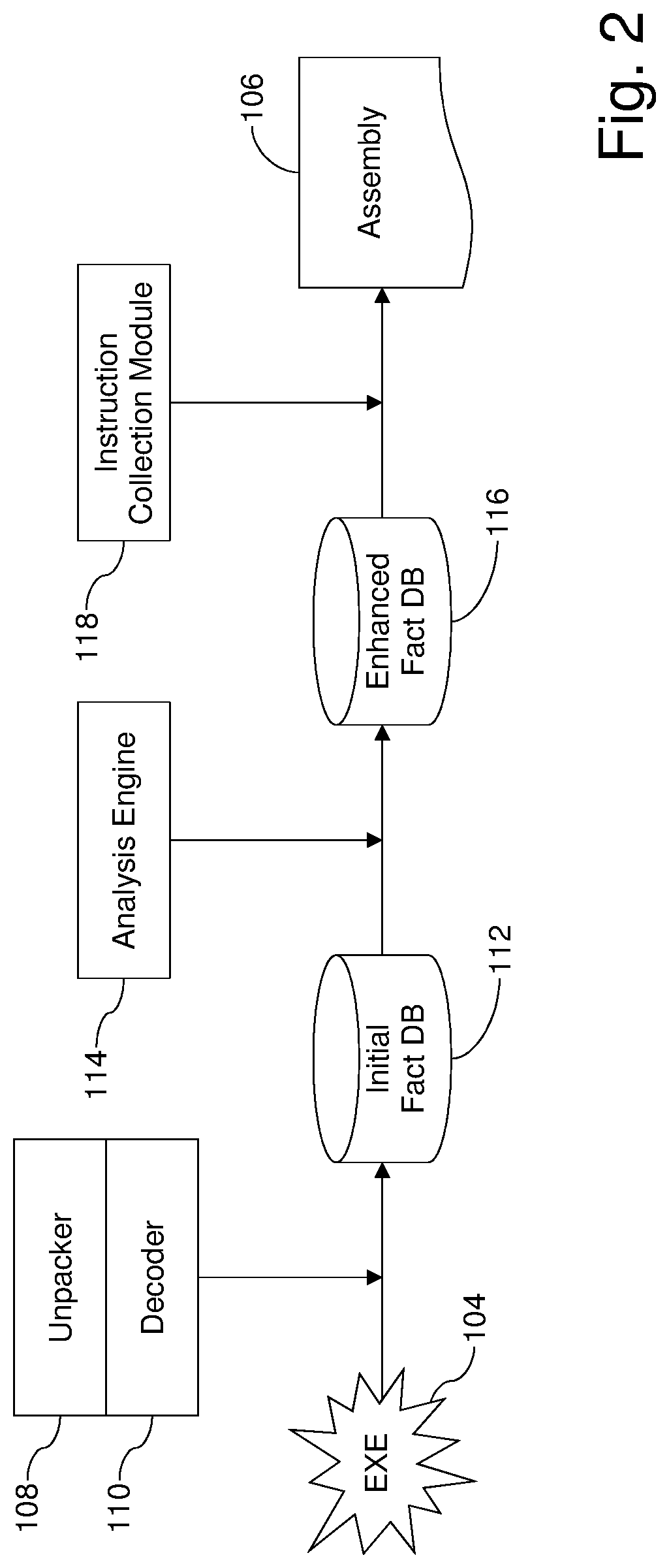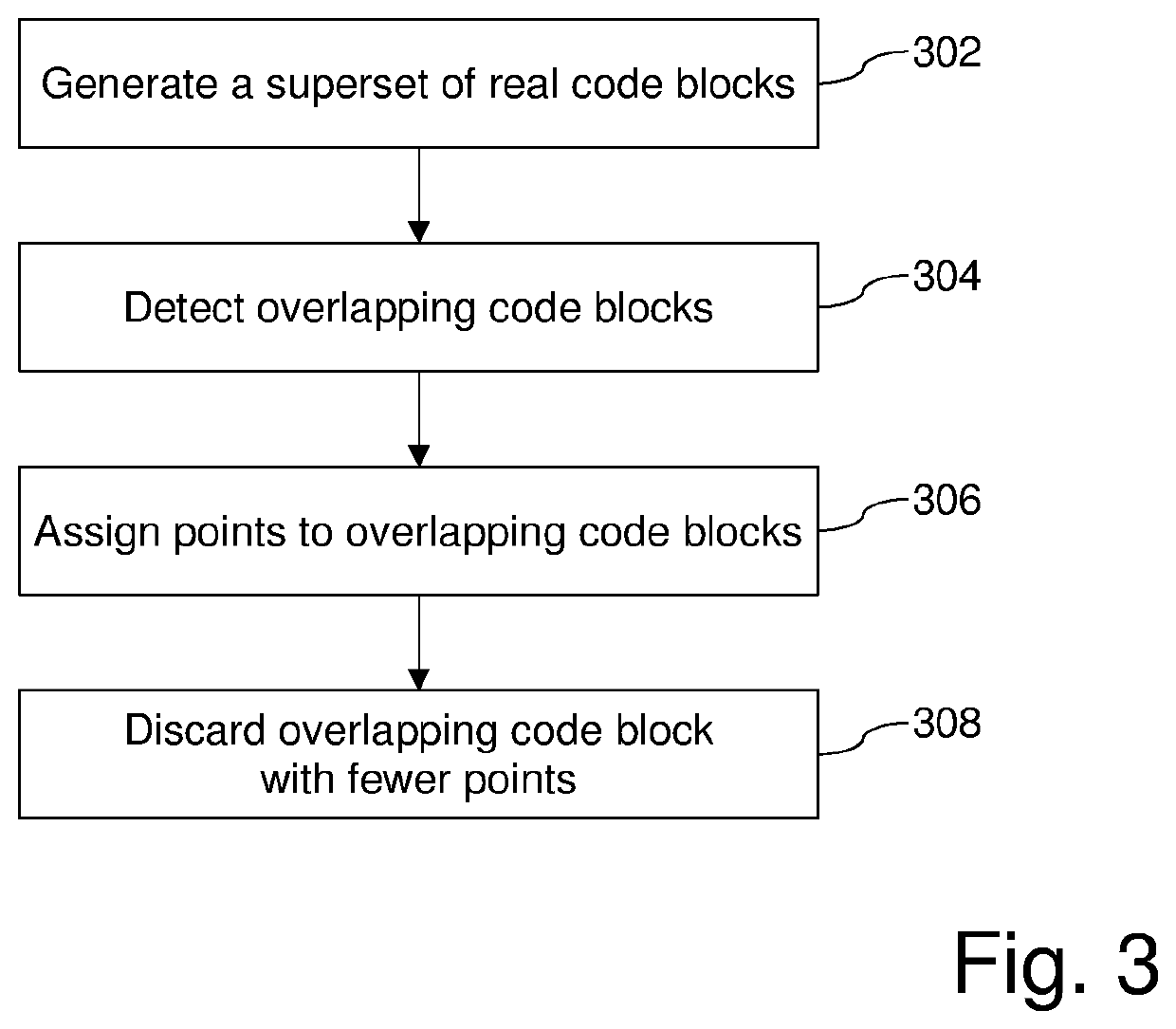Systems and/or methods for generating reassemblable disassemblies of binaries using declarative logic
a technology of declarative logic and binaries, applied in the field of computer programming languages, can solve the problems of not being suitable for (re-)generating machine language code, not being able to generate completely accurate disassemblies, and being difficult, sometimes impossible, to generate reassemblable disassemblies
- Summary
- Abstract
- Description
- Claims
- Application Information
AI Technical Summary
Benefits of technology
Problems solved by technology
Method used
Image
Examples
Embodiment Construction
[0031]Certain example embodiments relate to techniques for reconstructing assembly code from an executable program. A declarative logic programming language is used to compile reverse engineering, binary analysis, and disassembly rules into a format that may be applied to an executable program, yielding disassembly of that program. Datalog, for example, can be used as a query language for deductive databases, to facilitate this approach. Certain example embodiments thus involve (1) preparation of an executable for Datalog analysis, (2) inference rules and the application of Datalog for program analysis, including the application of Datalog to the domain of binary reverse engineering and analysis, and (3) the collection of assembly code from the results of the Datalog analysis. Specific Datalog rules used for analysis and disassembly are set forth below. Additionally, as will become clearer from the description below, these rules can include both “hard rules” and “soft rules” or heur...
PUM
 Login to View More
Login to View More Abstract
Description
Claims
Application Information
 Login to View More
Login to View More - R&D
- Intellectual Property
- Life Sciences
- Materials
- Tech Scout
- Unparalleled Data Quality
- Higher Quality Content
- 60% Fewer Hallucinations
Browse by: Latest US Patents, China's latest patents, Technical Efficacy Thesaurus, Application Domain, Technology Topic, Popular Technical Reports.
© 2025 PatSnap. All rights reserved.Legal|Privacy policy|Modern Slavery Act Transparency Statement|Sitemap|About US| Contact US: help@patsnap.com



